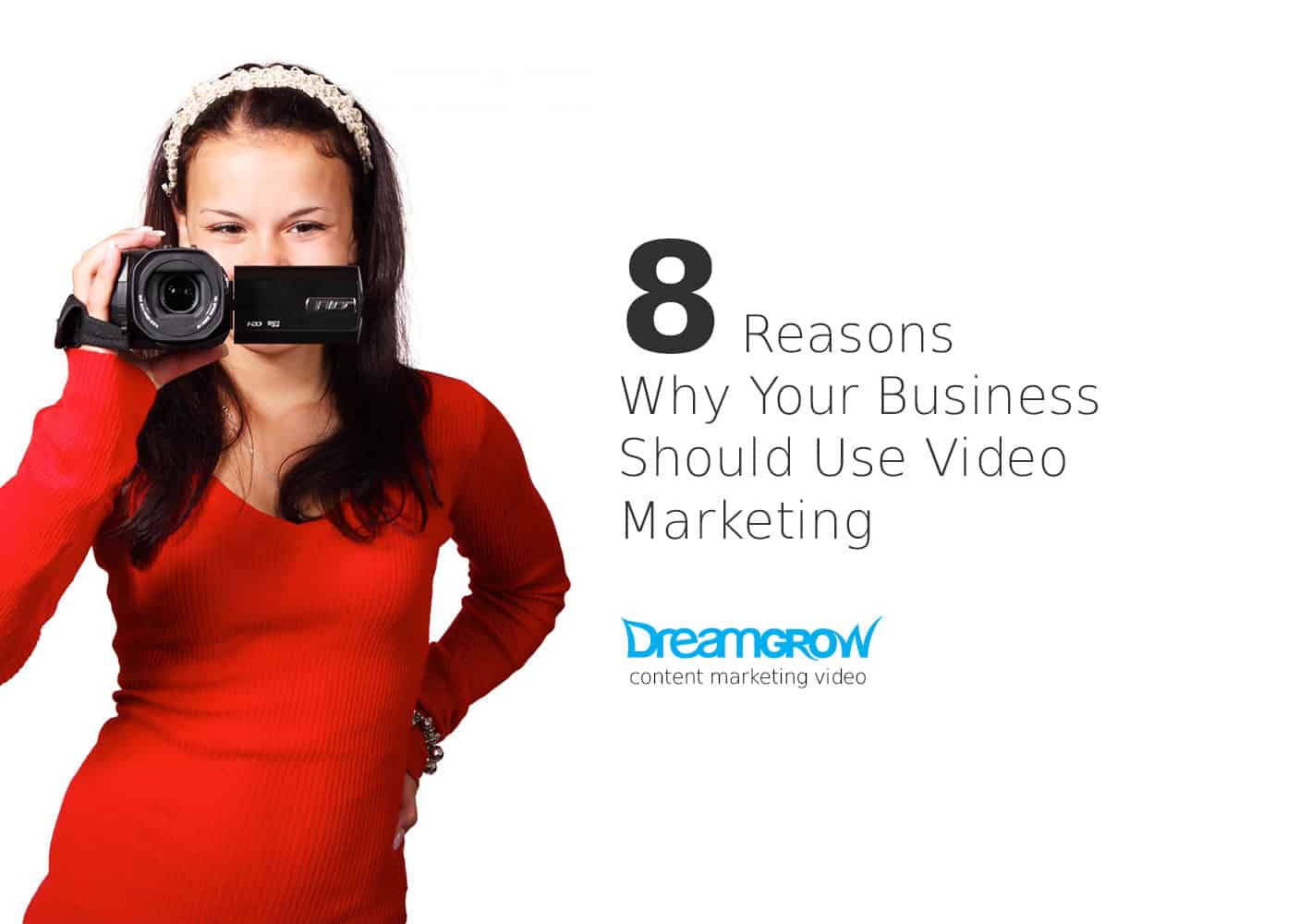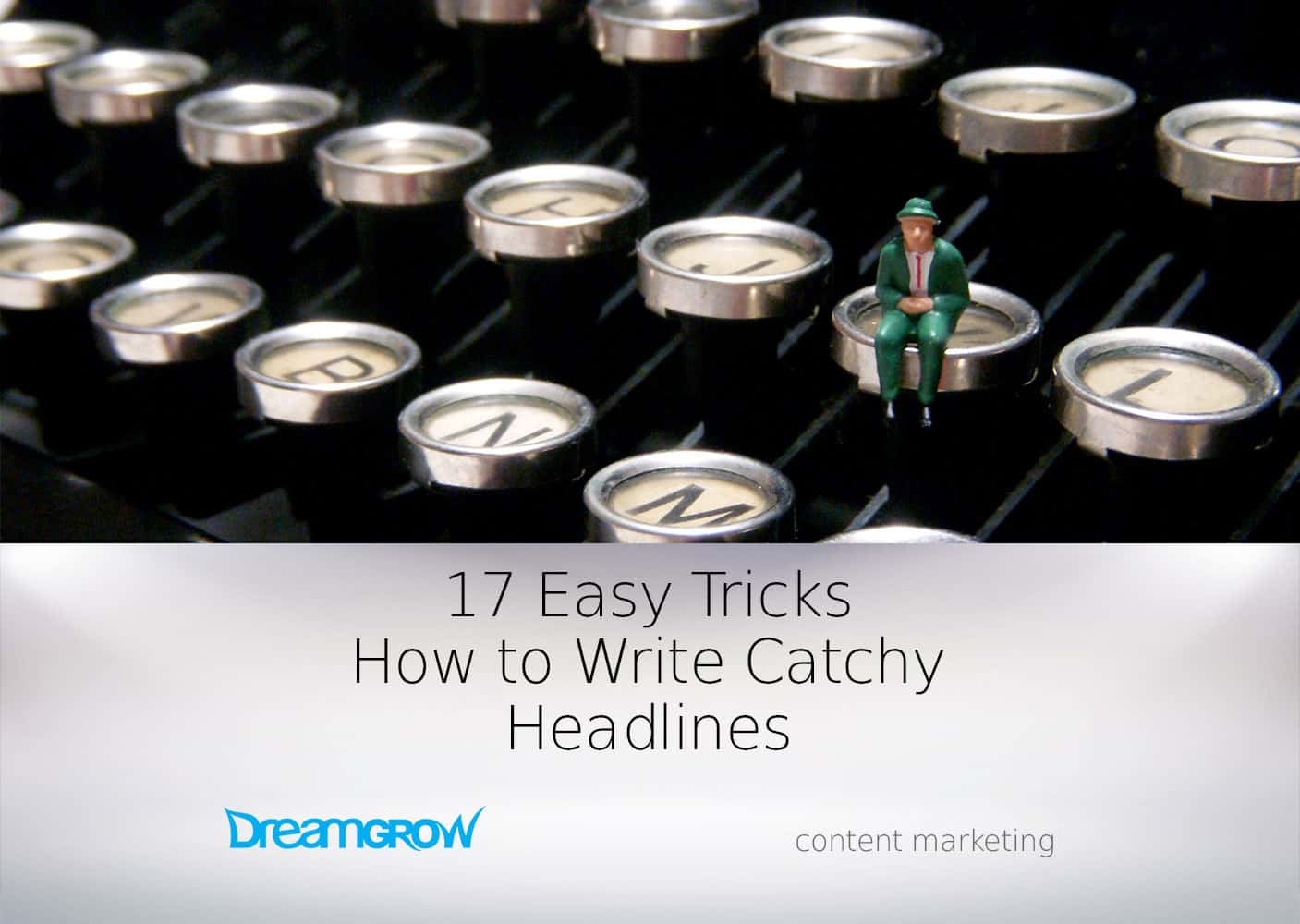Every month you publish thousands of words in articles, eBooks, and blog posts. Yet, only a handful of these ever get any readers. Even fewer get any likes or shares. Engagement is a massive problem at the heart of content marketing.
There’s just too much content, and too little of it gets read, liked or shared. According to TrackMaven research, content marketing output in 2015 rose by 35 percent but engagement actually dropped by 17 percent. Similarly, “Content Marketing Benchmarks, Budgets, and Trends” reported that effectiveness of content for B2B organizations dropped from 38 percent to 30 percent.
Fortunately, there is an easy way to fix this problem. Below, I’m going to show you 3 ways to maximize your content engagement right now. But first, let’s understand what content engagement means.
What Is “Content Engagement”?
To put it simply, “Content Engagement” is when real people respond in measurable ways to your content.
Different businesses have different definitions of Content Engagement. What counts as “engagement” for Buzzfeed may not necessarily be so for Copyblogger. This definition also differs by content-type; engagement for a blog post is very different from engagement for a webinar.
Similarly, engagement also depends on your marketing goals. If your goal is to get more email subscribers, then getting more page views won’t help your engagement rate.
For most businesses, however, tracking the following metrics can give you insight into content engagement:
- Total readers: The number of people who read a piece of content (similar to ‘unique visitors’).
- Time per reader: How much time each reader spends on a piece of content.
- Finish Rate: The percentage of readers who finish reading an entire piece of content.
- Shares: The number of people sharing your content
With that out of the way, let’s look at 3 ways to improve your content engagement significantly:
1. Ensure that Your Content Matches Your Headlines
One of the biggest reasons why people don’t finish an article is because there is a disconnect between what the article promises and what it delivers. Disconnect usually happens when you make a bold statement in the title, but fail to back it up with your content. You can easily solve the problem by writing what should the reader expect from the article.
For example, Brian Dean of Backlinko clearly states what a reader is going to learn in his blog posts:
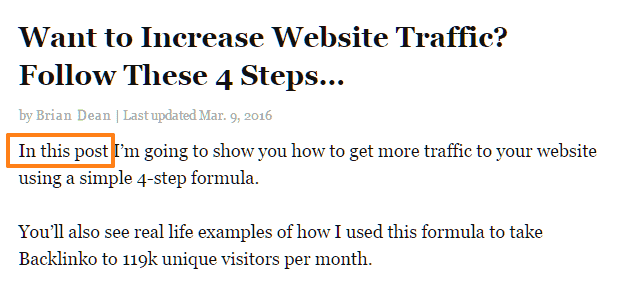
A reader who opens this post will have no ambiguity about the post content, and is thus, more likely to finish reading it.
Similarly, this article on the Google AdWords help site tells you exactly what you’ll learn from it. Notice how it also matches up with the article title:
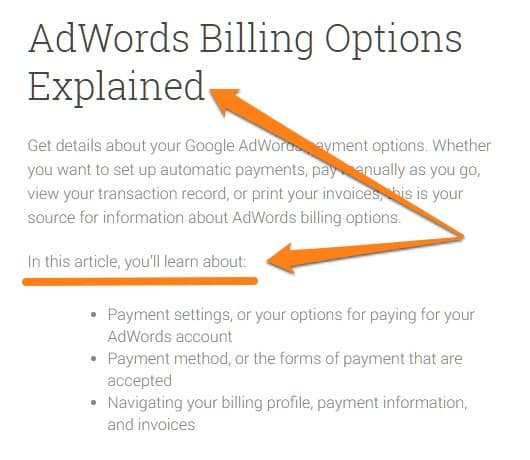
2. Grab Attention with Your Introduction
After the headline, the introduction is arguably the most important part of any piece of content. Lead is the part that hooks readers in – make it boring or unclear, and readers will drop off the page in seconds.
Here are three ways to get readers to stick around in the introduction:
A. Tell a Story
Storytelling techniques – withholding information, giving personal examples, using anecdotes, etc. – is one of the best ways to grab readers’ attention.
Here’s a perfect example from Jon Morrow of SmartBlogger:
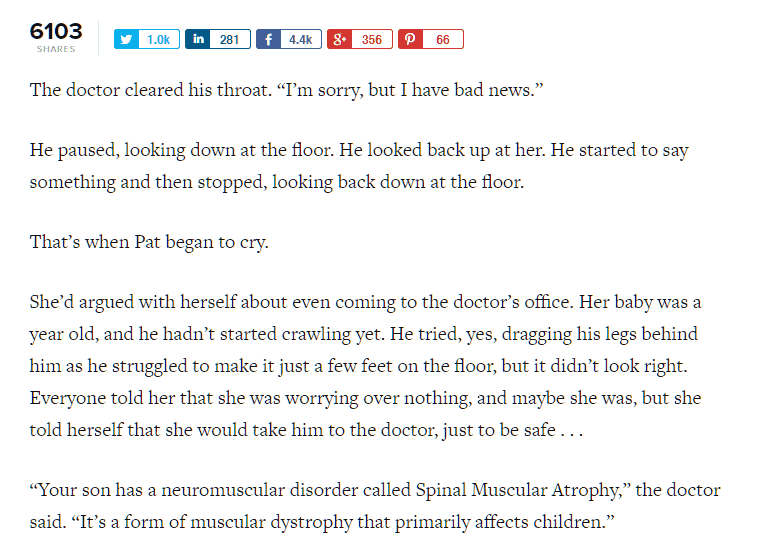
Instead of giving away the entire content from the very first word, Jon teases the readers and builds up anticipation for the rest of the content. Of course, it also helps that the story itself is unusual and inspiring. Read how content marketing is dead and now it's all about storytelling.
B. Scare Your Readers
If you can manage to make readers feel that they’ll lose something unless they read your post, you will increase your engagement rate manifold. The best way to do this is to address their common fears through emotion-rich trigger words (such as “devastating,” “scary,” “deadly,” etc.).
Here’s a great example from Copyblogger:
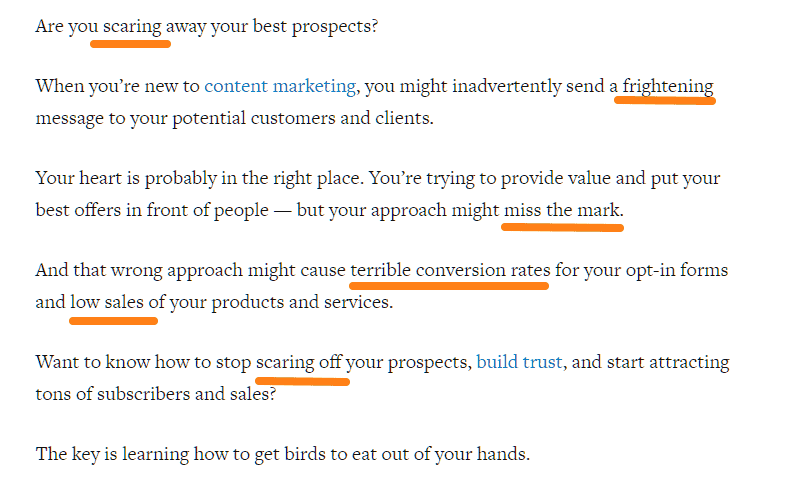
Notice all the highlighted words above. These words build up the argument that unless readers follow the advice in the article, they’ll scare away their best prospects – something no business owner wants.
C. Make a Bold Declaration
Making a bold declaration right in the introduction will stop readers right in their tracks and compel them to read more.
Here’s an example from INC Magazine:
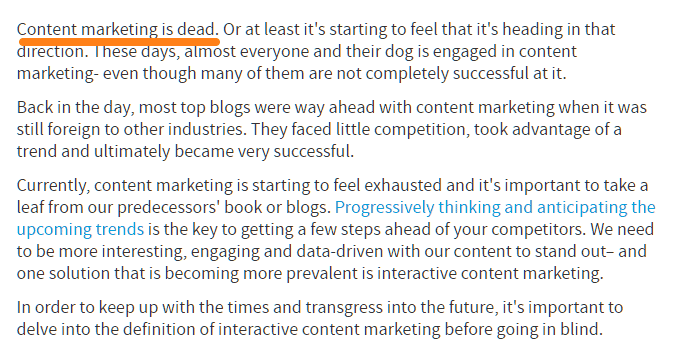
The article starts off by saying that “content marketing is dead” – a declaration that will ruffle feathers of anyone in the marketing field.
3. Use Better Content Design
What would you prefer to read?
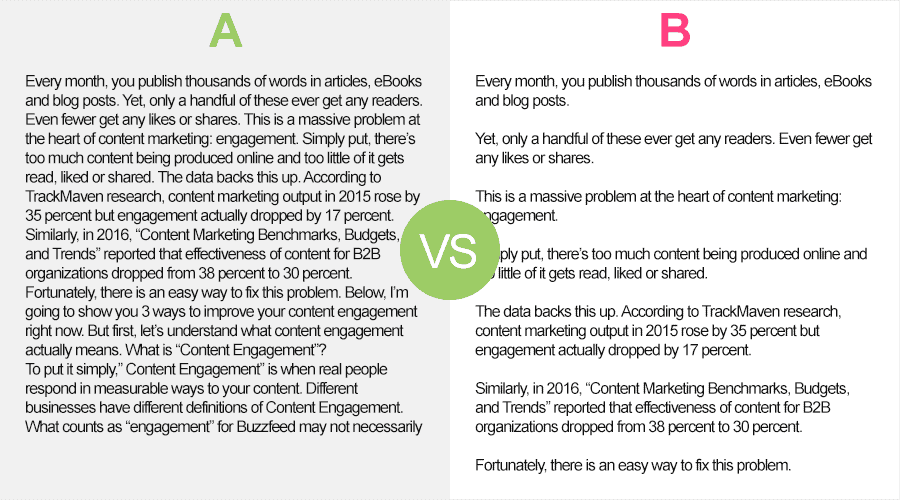
The latter, of course.
Readers don’t like to read large walls of text – at least not on a computer screen. It is visually taxing and difficult to comprehend. By using a visual structure that makes your content easier to read, you’ll keep readers engaged for longer.
Here are a few tactics you can use to make your content easier to read:
A. Create Short Paragraphs
Breaking down long sentences into short paragraphs increases your content’s readability.
Here’s a great example of this tactic on SmartBlogger.com:
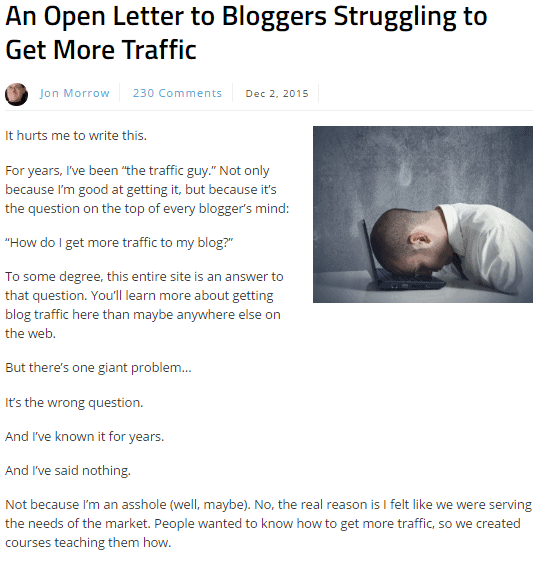
Jon even uses single sentence paragraphs in-between longer paragraphs.
B. Make Your Content More Visual
Images help in three ways:
- They are easier to process, and hence, a faster way to transmit information.
- They help break down the content into different sections.
- They help you show the solution to a problem instead of simply talking about it.
Neil Patel’s Quicksprout blog is a great example of how visuals can be used to make your content easier to read:
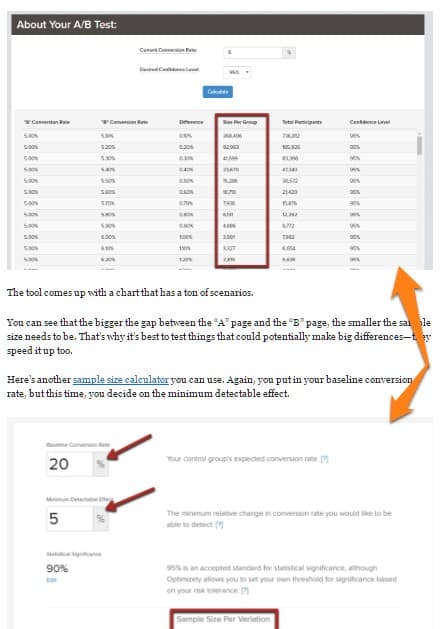
C. Take Advantage of Headers and Subheaders
Headers give your content a hierarchy. They also make it easier for readers to jump to sections that interest them. Additionally, breaking a long article into sections can make it easier for you to create content.
Take a look at this post from Buffer to see how to use headers and subheaders correctly:
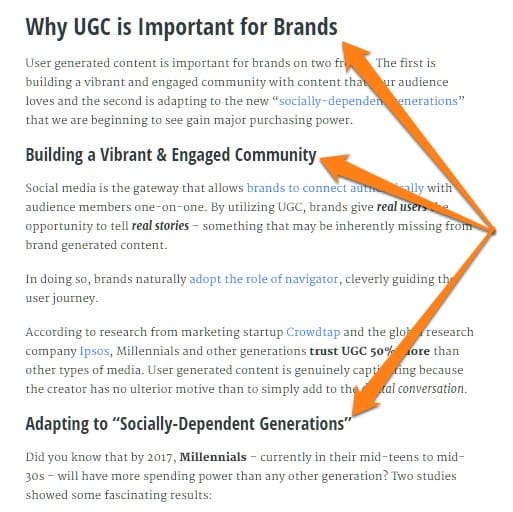
D. Guide Your Readers with a Table of Contents
A table of content is a must on longer articles. It will give readers a quick glance at the content and give them a shortcut to jump to the section that interests them.
Here’s a great example of a table of contents from Nick Kolenda:
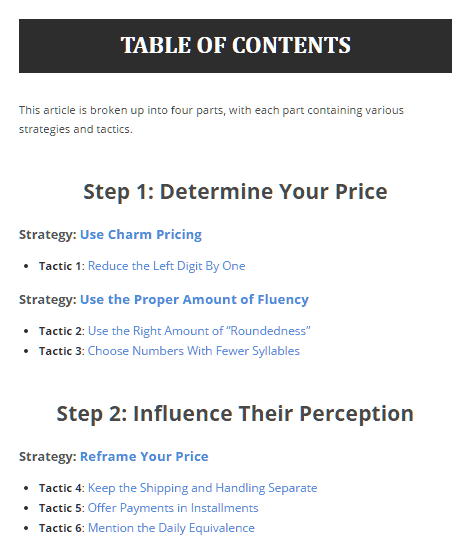
E. Follow the “Inverted Pyramid Model”
Newspapers have been following the inverted pyramid model for the longest time. It is a great way to structure your content in a way that readers will make the most out of it.
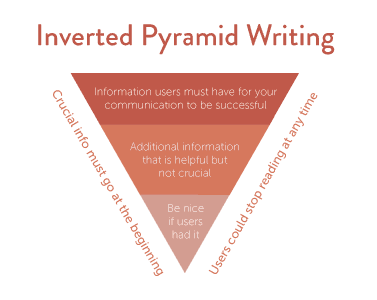
This model puts the most prominent information first embracing the idea that 80 percent of the readers never get past the headline. Although this may not work for every business.
F. Use Strategic Formatting
Add emphasis to a few important sentences by bolding or highlighting them. Because your readers prefer to scan, not read, there is a good chance they will pick up the highlighted text while going through your article.
Don’t overdo it by highlight everything. Too much highlighting would have the same effect as highlighting nothing.
Over to You
Keeping your readers engaged is a massive problem in content marketing, but it’s not difficult to solve if you create and structure your content right.
By being clear and upfront in your titles, grabbing readers’ attention in the introduction, and organizing your content in a visually pleasing manner, you can quickly make your content 2x more engaging.
Here’s what you should take away from this post:
- Make your headline very clear and make sure that your content backs up your claims.
- Focus on your content design to increase engagement.
- Create compelling introductions to keep readers interested.



